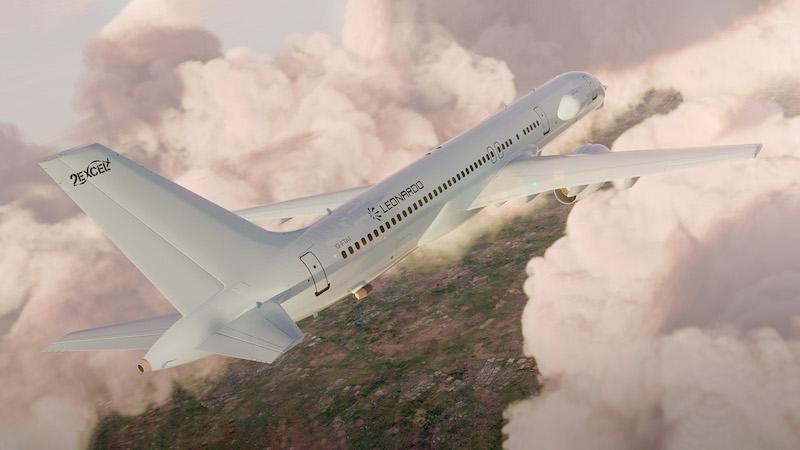
FARNBOROUGH—UK aerospace engineering company 2Excel has begun adding lumps, bumps and apertures to a Boeing 757 that will help to test the sensor suite and mission systems envisaged for the fighter aircraft set to emerge from the Global Combat Air Program (GCAP).
The 757—known as Excalibur—is currently being modified at 2Excel Engineering’s facility at Lasham, just a few miles from Farnborough, with cheek fairings and a centerline pod to house elements of the Isanke and ICS—for Integrated Sensing and Non-Kinetic Effects and Integrated Communications System—development of which is being led by Leonardo. Isanke and ICS are set to include the advanced Multi-Function Radio Frequency System (MFRS) radar, infrared search-and-track, defensive aids and other electronically scanned arrays.
The 757 will fly again with the modifications later this year, and additional changes will be made to the aircraft in phases, including the addition of the MRFS radar in a new nose fairing.
Isanke and ICS technologies could be airborne by the next Farnborough Airshow in 2026.
“The next [Farnborough Airshow] is probably a window where things could be really quite exciting,” Andrew Howard, director of Future Combat Air at Leonardo UK, told reporters on the second day of the air show. “By then, it will be an embodied platform that has capability that we could demonstrate and start to take learning from,” he said.
“It's an essential part of the flight test program, being able to test and demonstrate that the equipment works in the air, and not just in the simulator,” said Chris Norton, one of the founders and a director at 2Excel. To develop the flight-test aircraft, 2Excel purchased two 757s and dismantled one of them to create a digital twin to support the conversion of the second. Work on the Isanke and ICS system is proceeding apace, Howard said, with many of the new technologies being matured to a higher technology readiness level as the components move toward delivery and installation on the flight-test aircraft.
The 757's size, weight and electrical power capabilities make it suitable as a test aircraft. Excalibur will operate on a civilian—rather than military—"G" registration basis, with UK Civil Aviation Authority-certified supplementary type certificates to give the aircraft what Norton called “freedom of maneuver.”
“We want to be able to take [Excalibur] across borders … go around the world in order to give the people who want to test something the freedom to go to the right environment, to the right range and put themselves in the right scenario,” Norton said.
Consideration is also being given to how long Excalibur might be available to support the development of GCAP.
“We've asked good questions around sort of durability, longevity, obsolescence issues, as the 757 is an older airplane … and given the emphasis on spiral [development], it is hard to imagine you wouldn’t want to maintain a test platform that can continue to develop the technologies,” Howard said.
Howard said the ambition to retain the FTA was that it was not yet funded or fully agreed.
